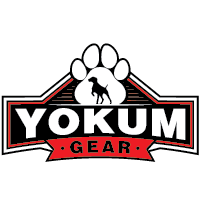Understanding Off-Leash K9 Control
Training a dog to perform reliably off-leash is one of the most rewarding achievements for any dog owner. However, it requires time, consistency, and well-implemented training techniques. Successfully teaching off-leash control not only enhances the dog-owner bond but also ensures the dog's safety and compliance in various environments. Here are some comprehensive tips to help you train your dog for off-leash control.
1. Establish a Solid Foundation
Before you attempt any off-leash training, your dog must understand and obey basic commands like sit, stay, come, and heel while on a leash. Consistent obedience to these commands sets the groundwork for off-leash training. If your dog is not dependable on leash, off-leash training may lead to confusion and potential safety hazards.
2. Build Trust and a Strong Recall Command
Trust is paramount for successful off-leash training. A strong recall command, typically using the word come, is essential. Practice recall in a controlled environment, gradually increasing the distance and distractions. Reward your dog with high-value treats or favorite toys to reinforce positive behavior. Consistent practice in varied locations fortifies this command.
3. Use Long Leads and Gradual Progression
Start with a long lead or training line that allows your dog more freedom while still giving you control. This intermediary step helps your dog get used to the sensation of more independence without risking total off-leash freedom. Gradually reduce the length of the lead as your dog demonstrates reliable responsiveness.
4. Train in a Controlled, Safe Environment
Begin off-leash training in a secure, enclosed area where distractions are minimal, such as your backyard or a quiet park. This ensures your dog is safe and reduces the risk of accidents. Slowly introduce new environments with varying levels of stimuli as your dog progresses.
5. Reinforce Positive Behavior Consistently
Consistency is key in dog training. Reinforce desired behaviors with consistent rewards. Whether using treats, praise, or play, ensure that your dog associates positive outcomes with following commands. Inconsistency can confuse your dog and delay training progress.
6. Use Distractions to Test Reliability
As your dog becomes more reliable in basic off-leash commands, introduce distractions to test their focus and commitment to following commands. Start with low-level distractions and gradually increase complexity. This could include other dogs, people, or noises. Always ensure the environment is safe for off-leash testing.
7. Practice Off-Leash Walks Frequently
Integrate off-leash practice into your routine walks. Begin with short periods and gradually increase the duration as your dog proves trustworthy. Keep sessions positive and end on a high note to maintain enthusiasm and motivation for future training.
8. Ensure Safety and Supervision
Even with a well-trained dog, always supervise off-leash activities, especially in unfenced areas. Utilize tools like GPS trackers or identification collars for additional safety. Stay vigilant for possible hazards or situations that might tempt your dog to stray.
9. Address Setbacks with Patience
Training setbacks can occur. Approach them with patience and go back to basics if necessary. Addressing minor behavioral issues promptly prevents them from escalating and helps maintain your dog's training progress.
10. Enroll in Professional Training Classes
If off-leash training proves challenging, consider enrolling in professional training classes. Experienced trainers provide valuable insights, techniques, and structured environments beneficial for both you and your dog.
Conclusion
Training your dog for off-leash control is a gradual process requiring commitment, patience, and consistent practice. By laying a strong foundation, reinforcing positive behaviors, gradually introducing new environments, and practicing regularly, you can achieve reliable off-leash control. Remember, the ultimate goal is a safe and enjoyable off-leash experience that strengthens the bond between you and your canine companion.

